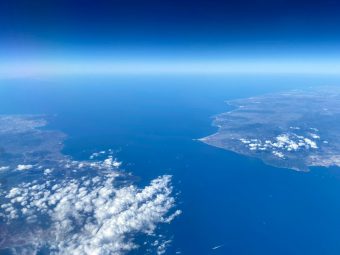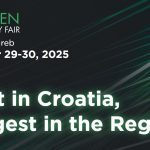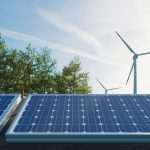
Morocco’s potential for the production of renewable energy from wind and sun positions the country very high on the list of the most important stakeholders in the global transition towards green fuels. Thanks to its potential, this country has set the goal of producing 0.67 million tonnes of green hydrogen annually by 2030.
Green hydrogen is obtained by electrolysis of water, using electricity obtained from renewable sources and is then used as a key component in the production of other types of green fuels, like e-methanol or ammonia.
Although Morocco has set itself an ambitious goal, the current projects produced only 0.05 million tonnes on an annual basis. Research conducted by the European Federation for Transport & Environment has shown that thanks to its potential and the EU’s green fuel policies, Morocco has the opportunity to become an important hub for supplying fuel to ships. If it were to achieve the set goal, it could satisfy part of the European Union’s demand for this fuel, exporting 0.22 million tonnes to the European Union.
Such predictions are supported by research data, which shows that of over 2,300 ship voyages between Europe and East Asia in 2019, two-thirds used the Strait of Gibraltar, which is located between Morocco and Spain. On the other hand, it is expected that by 2050, green fuels will account for 80 per cent of the energy consumption of ships sailing to and from the European Union.
More:
- PRODUCING HYDROGEN FROM IRON-RICH ROCKS WITHOUT EMITTING CARBON DIOXIDE?
- SLOVENIA – FORMATION OF CONSORTIUM FOR THE DEVELOPMENT OF HYDROGEN ECOSYSTEM FROM LOW-CARBON SOURCES
- NEW SIGNIFICANT INVESTMENTS IN GREEN HYDROGEN
The European Union’s green fuel policy could encourage Morocco to meet its production target of 0.67 million tonnes.
This great interest resulted in the German-Moroccan Hydrogen Agreement, signed in 2020, which stipulates the joint development of green hydrogen production that would be used in Morocco and Germany. Investments have already been promised, which will help Germany to purchase green hydrogen from Morocco in the future.
One of the obstacles for this country in achieving its goal is the scarcity of water resources, which are needed for the production of green hydrogen. The largest part, from 80 to 95 per cent, of available water is used for agricultural purposes and there is also the problem of population growth, climate change and pollution. Hence, Morocco is planning to build several new seawater desalination plants, which will now be powered by renewable energy sources, instead of the current plants that run on fossil fuels.
Furthermore, it is necessary to balance out the still high production costs, the lack of developed infrastructure and other challenges in order for Morocco to succeed in achieving its set goal.
It should be noted that on a global level, shipping consumes about 300 million tonnes of fossil fuels in a year, which contributes three per cent to the total anthropogenic emissions.
Katarina Vuinac



